Cristian Fracassi, the inventor of the Charlotte valve and many other patents. How is the inventor’s work today?
A valve stuck to a diving mask that saves thousands of lives
The story of Cristian Fracassi is impressive. In times of crisis he invented a valve adapting it to the Decathlon diving masks to save Covid-19 patients. What’s more rewarding for an inventor than saving lives? At the beginning, however, the inventor had his “troubles”. In fact, Cristian Fracassi, when the director of the Giornale di Brescia, Nunzia Vallini, asked him to design a valve with a 3d printer to adapt it to the respiratory masks for Covid-19 patients because they were in short supply, Cristian had some hesitation:
“If I had designed a valve incorrectly and caused irreparable harm to the sick? What if someone died because of my mistake? I began to think that Nunzia Vallini’s request was too much for me and I thought it would be better to back down”.
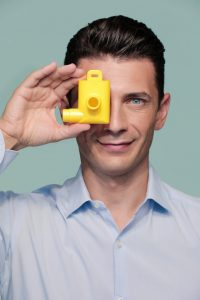
In fact, an assignment of this kind is not a small thing because you have human lives in your hands. Cristian Fracassi and his work team did not run away from this challenge and in the end they did well: the valves worked and, when they adapting them to the Decathlon diving masks thanks to the idea of Dr. Renato Favero because even the respiratory masks were ending (Ed., Massimo Temporelli, an innovation expert, personally got in touch with Decathlon), it was a real success and today one hundred and fifty thousand masks are used all over the world.
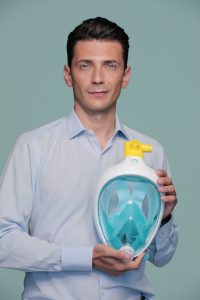
Desperate times call for desperate measures. Who would have thought that a diving mask could save lives? Cristian Fracassi’s work must be rewarded and in fact the President of the Republic Sergio Mattarella recently nominated him as a “Knight of Merit”. Anyway, the valve has a name: Cristian wanted to call it Charlotte like his wife.
Who is Cristian Fracassi and his first patent
Reading this story, one wonders who is this genius of Cristian Fracassi. Cristian was born in Manerbio, in the province of Brescia, on March 27 1983 by two small entrepreneurs who worked in the textile industry. His passion for machinery was born when he was a child, thanks to his father:
“My father was very stingy, that’s why he sitted next to those who did maintenance in the factory to be able to repeat the same gestures and fix things himself. When he said to me ‘Come and help me!‘, I learned a lot from him about how machines work“.
Cristian Fracassi was very good at school specially in science subjects and at eighteen he became the Italian mathematics champion. Between engineering and architecture, at the end he chose a double degree:
“It was 2009, a very bad year for the earthquake in L’Aquila. The demolished houses images on television made me so angry because I was thinking about how I could help. One day I saw a pickup truck in front of my university carrying water plastic bottles. From that episode I got the idea of creating plastic bricks to build safe and anti-seismic houses. I decided to do my thesis on it“.
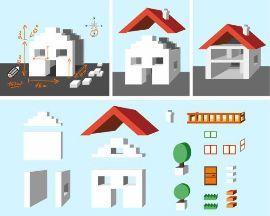
Cristian Fracassi, becoming passionate about the potential of plastic, participates in a competition of the Milan Chamber of Commerce (Ed., the Lifebility competition, still active and in its tenth edition) with the BLICE project: it is an indicator of defrosting for frozen food. BLICE is made up of an ice cube inside a plastic sphere. The system is in the frozen food packages and it monitors the temperature during the steps of the supply chain. If the temperature rises, the ice cube begins to melt and turns into liquid. With this system, even if the temperature is brought back within the limits, the liquid will no longer return to a cube indicating that the food is defrosted.
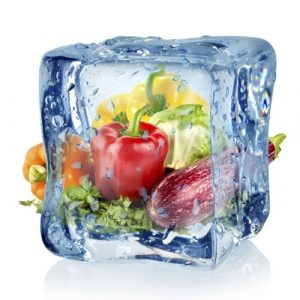
With that project Cristian wins the first prize of five thousand euros and, instead of buying his first car (Ed., he was twenty nine at the time), he decides to use that money to file his first patent. Two days after filing his first patent, Cristian Fracassi is called by a local entrepreneur who buys his license of use for five years at fourteen thousand euros, almost three times more than the cost of the young inventor patent. This is the entrepreneur Alvise Mori with whom Cristian Fracassi, in 2014, founded the company Isinnova which helps to realize an innovative idea from the initial analysis to the sale and marketing.
Cristian Fracassi: “the intellectual property is important”
Although the valve drawings have been shared for free on the internet in order to save lives, according to Cristian, intellectual property is one of the strengths, if not the only one, for a young inventor to compete and assert its rights in an increasingly competitive world:
“When we created our inventions we immediately shared them for free so that everyone could download the file of our project. To avoid speculation and to prevent anyone from making a profit, we registered the patent to protect it and not to make money. Therefore, protecting one’s ideas is the first step for any future choice: both to be able to use them freely and prevent third parties from privatizing them but also to avoid losing the initial competitive advantage of a young inventor in view of agreements with important industrial and commercial partners“.
Today Cristian is the owner of dozens of patents. The ideas developed range in many fields: from frozen foods to wooden houses construction, from biomedical to the sports world, from bicycles to methods for extruding aluminum, from dishwashers to hinges for doors.
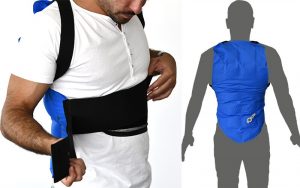
“Intellectual property is like having a house – added Cristian Fracassi – because you can decide to rent part of it but with the advantage of being able to rent it to more people at the same time, dividing for example the licenses by territories“. In fact, patents, as well as copyright and many other intellectual property titles, if well protected, can be licensed to third parties who will take care of their production and marketing, limiting the inventor’s business risk and allowing him to spend time to other innovations.
Today Cristian devotes himself full time to his company Isinnova which helps young inventors towards the development of ideas from the early stages of analysis to marketing: “At Isinnova we use digital and with 3D printers we create objects and finished products. At the end I stayed true to myself and today I am a mechanic like when, as a child, I used to help my father in the factory”.
____
Have an idea? Protect it with Tutelio! Place your first project and get the certificate of authorship. It’s free!
